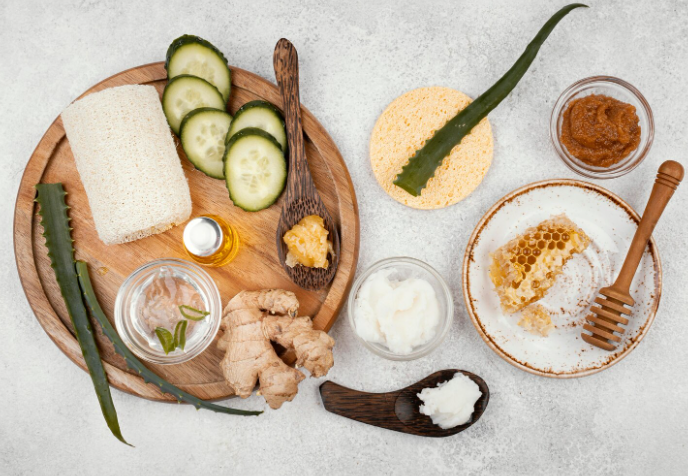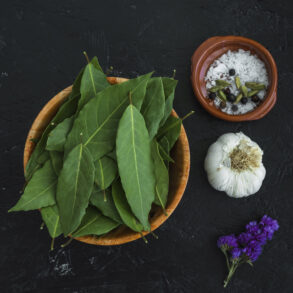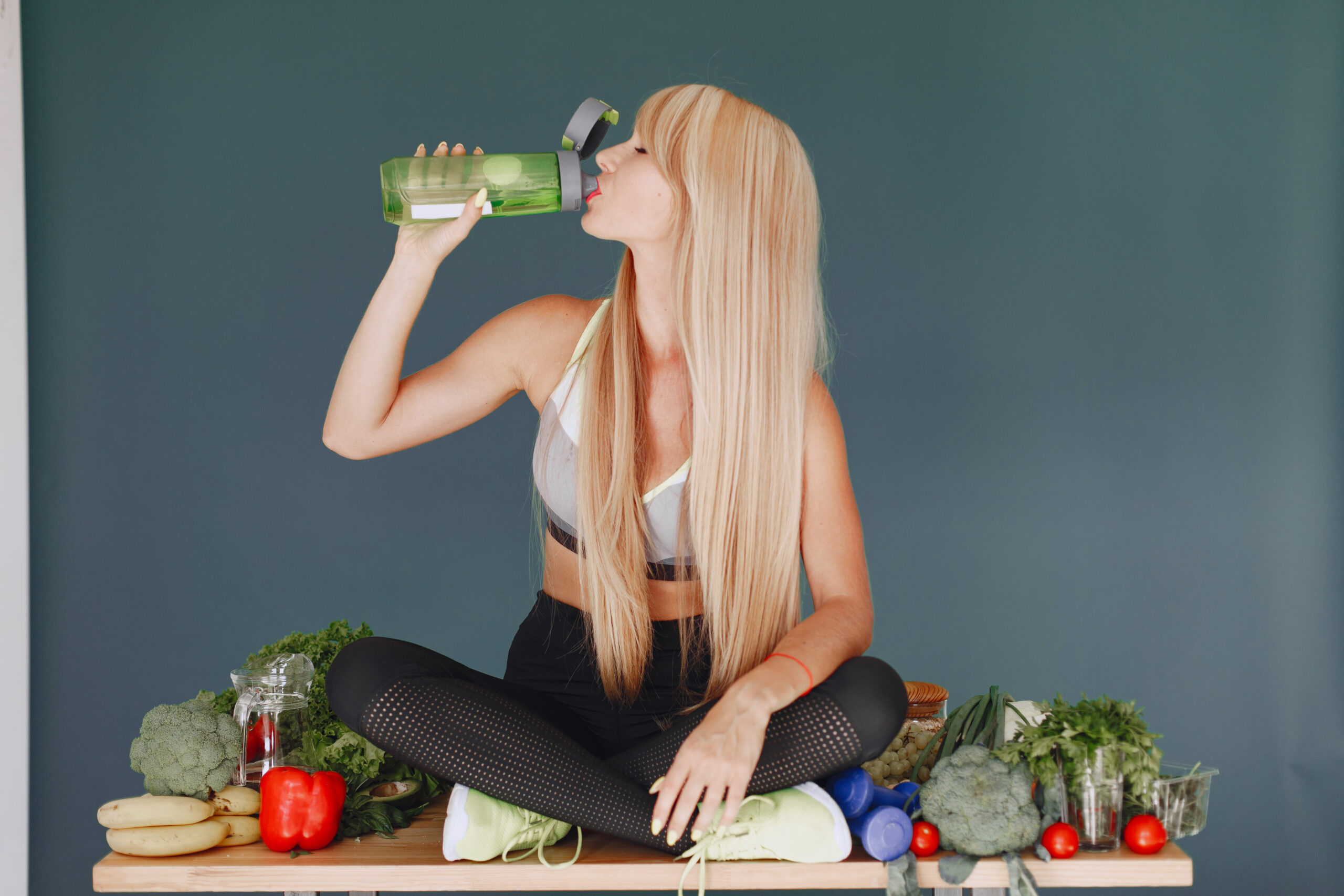In today’s world of intense skincare routines, exfoliation has become a buzzword. From chemical peels to micro-scrubs, every beauty regimen promises instant radiance. But for those with sensitive skin, these modern methods often do more harm than good—causing redness, irritation, or even microtears. Ayurveda, the ancient science of life, offers a different path: gentle renewal through nature.
Rooted in balance, Ayurveda believes that true beauty arises when the doshas—Vata, Pitta, and Kapha—are harmonized. By using time-tested herbs, grains, and natural minerals, it teaches us how to exfoliate softly, nourish deeply, and heal holistically. That’s why exploring natural exfoliators for sensitive skin based on Ayurvedic science has become a sanctuary for modern skincare seekers looking for results without chemicals.
1. Understanding Exfoliation Through the Ayurvedic Lens
Ayurveda sees the skin (Twacha) as more than a surface—it’s a mirror of internal health. The process of exfoliation (Udvartana or Lepana) is not about scrubbing off dead cells aggressively, but rather, stimulating lymphatic flow, detoxifying channels (Srotas), and renewing Ojas—the essence that gives the skin its natural glow.
Why Conventional Exfoliation Fails Sensitive Skin
- Harsh acids strip the protective barrier.
- Microbeads and chemical peels cause inflammation.
- Fragrances and alcohols trigger Pitta imbalance.
Ayurveda, however, focuses on gentle renewal. Natural exfoliators like lentil flour, oats, and fine herbal powders cleanse while also calming irritation. Thus, natural exfoliators for sensitive skin based on Ayurvedic science are not only skin-safe but body-affirming—they honor your skin’s rhythms rather than fight them.
2. The Role of Doshas in Skin Sensitivity
Each skin type correlates with dominant doshas that determine texture, reactivity, and moisture levels. Knowing your dosha helps select the right exfoliator.
| Dosha Type | Skin Traits | Common Issues | Ideal Ayurvedic Exfoliation |
|---|---|---|---|
| Vata (Air + Ether) | Dry, thin, flaky | Rough texture, early wrinkles | Use creamy, oil-based exfoliators with oats, ghee, or milk |
| Pitta (Fire + Water) | Sensitive, prone to redness | Rashes, pigmentation | Cooling ingredients like sandalwood, rose, and aloe |
| Kapha (Earth + Water) | Oily, thick | Congestion, dullness | Warming herbs like turmeric, triphala, and chickpea flour |
When developing natural exfoliators for sensitive skin based on Ayurvedic science, always match ingredients to your dosha’s needs for harmony and balance.
3. Ayurvedic Philosophy of Gentle Cleansing
Ayurveda defines beauty in terms of purity (Saundarya), strength (Bala), and radiance (Tejas). Harsh scrubbing disrupts all three. Instead, the skin should be “coaxed” into renewal.
The Principles of Ayurvedic Exfoliation
- Use edible-grade ingredients — if it’s safe to eat, it’s safe to apply.
- Always lubricate with oil or milk to prevent micro-tears.
- Massage mindfully—pressure should be light and rhythmic.
- Follow with hydration to replenish lost moisture.
This mindful approach transforms exfoliation from a mechanical task into a self-care ritual, making natural exfoliators for sensitive skin based on Ayurvedic science both therapeutic and effective.
4. Top Natural Exfoliators for Sensitive Skin Based on Ayurvedic Science
Let’s explore the key ingredients Ayurveda recommends for delicate, easily irritated skin.
a. Oats (Jau) – The Calming Cleanser
Oats are rich in beta-glucans that soothe and protect the skin barrier. Ayurveda classifies them as Snigdha (unctuous) and Madhura (sweet), perfect for Pitta and Vata types.
- Use: Mix ground oats with milk or rose water.
- Benefits: Gently lifts dead cells, locks in moisture, and reduces inflammation.
b. Chickpea Flour (Besan) – The Traditional Udvartana Base
Used for centuries in Indian households, besan is a mild cleanser that removes impurities without stripping oils.
- Use: Combine with turmeric and honey for a soft scrub.
- Benefits: Evens tone, reduces oil, and improves texture.
c. Sandalwood Powder (Chandan) – The Cooling Healer
Sandalwood pacifies Pitta dosha and calms irritated skin.
- Use: Mix with rose water or aloe vera gel.
- Benefits: Reduces redness, inflammation, and pigmentation while exfoliating delicately.
d. Manjistha – The Detoxifying Herb
Manjistha purifies the blood and enhances circulation.
- Use: Blend with honey and oats for a mild resurfacing mask.
- Benefits: Encourages cell renewal and clears dullness.
e. Licorice Root (Mulethi) – The Brightening Herb
Licorice has natural enzymes that loosen dead skin and lighten dark spots.
- Use: Mix mulethi powder with aloe gel.
- Benefits: Smoothens texture and promotes an even tone.
These time-tested botanicals define the heart of natural exfoliators for sensitive skin based on Ayurvedic science—safe, holistic, and full of life energy (Prana).
5. DIY Ayurvedic Exfoliation Recipes for Sensitive Skin
Each blend can be customized depending on your skin condition and climate.
1. Rose-Oat Gentle Scrub
Ingredients:
- 2 tbsp finely ground oats
- 1 tbsp rose water
- 1 tsp honey
Method:
Mix into a paste and massage lightly in circular motions for 2–3 minutes. Rinse with cool water.
Result: Softer skin and instant calm.
2. Besan-Turmeric Radiance Pack
Ingredients:
- 1 tbsp chickpea flour
- 1 pinch turmeric
- 1 tsp yogurt or milk
Method:
Apply evenly and let sit for 10 minutes before rinsing.
Result: Smooth, golden glow without irritation.
3. Aloe-Manjistha Cooling Mask
Ingredients:
- 1 tbsp aloe vera gel
- ½ tsp manjistha powder
- Few drops of cucumber juice
Method:
Apply for 15 minutes and rinse off.
Result: Reduced redness and balanced texture.
These blends embody the essence of natural exfoliators for sensitive skin based on Ayurvedic science—hydrating, detoxifying, and naturally fragrant.
6. The Science Behind Ayurvedic Exfoliation
Modern dermatology supports many of Ayurveda’s ancient observations.
- Colloidal Oatmeal: Scientifically proven to strengthen the skin barrier and reduce itching.
- Chickpea Flour: Contains saponins that act as gentle surfactants, cleansing without drying.
- Sandalwood: Exhibits anti-inflammatory and antimicrobial activity confirmed in clinical studies.
- Licorice Extract: Glabridin inhibits melanin production, preventing post-inflammatory pigmentation.
These findings validate that natural exfoliators for sensitive skin based on Ayurvedic science aren’t just traditional—they’re scientifically sound.
7. Step-by-Step Ayurvedic Exfoliation Ritual
Transform your exfoliation routine into a grounding self-care ceremony.
Step 1: Cleanse
Use lukewarm water and a mild herbal cleanser like rose or vetiver-infused powder.
Step 2: Steam (Optional)
For oily or congested skin, 1–2 minutes of herbal steam opens pores.
Step 3: Exfoliate
Apply your chosen Ayurvedic exfoliator. Use fingertips in gentle, upward motions.
Step 4: Tone
Spritz rose or tulsi water to balance the skin’s pH.
Step 5: Moisturize
Finish with aloe vera, kumkumadi oil, or saffron-infused cream for hydration.
This slow, mindful process shows that natural exfoliators for sensitive skin based on Ayurvedic science rejuvenate both skin and spirit.
8. External Oils that Complement Exfoliation
Ayurveda recommends nourishing the skin after exfoliation with oils tailored to dosha type.
| Dosha | Recommended Oils | Benefits |
|---|---|---|
| Vata | Almond, Sesame, Avocado | Deep hydration and elasticity |
| Pitta | Coconut, Sandalwood, Aloe-infused | Cooling and soothing |
| Kapha | Mustard, Neem, Triphala oil | Detoxifying and stimulating |
These oils replenish nutrients, helping natural exfoliators for sensitive skin based on Ayurvedic science work more effectively by maintaining lipid balance.
9. Common Mistakes to Avoid
Even the gentlest exfoliation can harm if done carelessly.
- Over-scrubbing: Leads to barrier damage. Limit to twice a week.
- Skipping Moisturizer: Always follow exfoliation with oil or cream.
- Using Rough Grains: Avoid sugar, salt, or walnut shells for sensitive skin.
- Exfoliating Inflamed Skin: Never apply scrubs on acne or rashes.
Ayurveda’s wisdom emphasizes moderation—proof that less is truly more when using natural exfoliators for sensitive skin based on Ayurvedic science.
10. Herbal Combinations for Enhanced Results
Ayurveda often blends herbs to achieve balance, ensuring exfoliation is gentle yet effective. Let’s look at classic combinations that have stood the test of time.
a. Triphala and Honey Blend
Triphala—made from amla, haritaki, and bibhitaki—is one of Ayurveda’s strongest rejuvenators.
- Preparation: Mix ½ teaspoon Triphala powder with 1 teaspoon honey.
- Use: Massage on damp skin for 2–3 minutes, then rinse.
- Benefits: Detoxifies pores and tones skin without causing dryness.
Triphala’s antioxidants complement honey’s humectant properties, making it one of the most balanced natural exfoliators for sensitive skin based on Ayurvedic science.
b. Masoor Dal (Red Lentil) and Milk Exfoliant
Masoor dal flour is finely milled to remove dead cells while milk’s lactic acid softens skin.
- Preparation: Grind soaked red lentils into a fine paste, add a spoon of milk.
- Benefits: Fades blemishes, adds glow, and maintains moisture barrier.
This remedy showcases how natural exfoliators for sensitive skin based on Ayurvedic science can merge proteins and vitamins for total nourishment.
c. Aloe Vera and Sandalwood Cooling Paste
Ideal for Pitta skin prone to redness.
- Preparation: Mix 1 tbsp aloe vera gel with ½ tsp sandalwood powder.
- Use: Apply as a leave-on mask for 10 minutes before rinsing.
- Benefits: Reduces inflammation and brightens complexion gently.
11. Seasonal Adjustments for Sensitive Skin
Ayurveda emphasizes Ritucharya—adapting skincare to the changing seasons. Each season alters dosha balance and demands specific ingredients.
| Season | Skin Challenges | Ayurvedic Remedy |
|---|---|---|
| Winter (Hemanta) | Dryness, dullness | Use oil-based exfoliators with almond and sesame oil |
| Summer (Grishma) | Redness, sensitivity | Switch to aloe, sandalwood, and rose powder masks |
| Monsoon (Varsha) | Congestion, humidity | Use Triphala and Multani Mitti for detoxification |
| Autumn (Sharad) | Pigmentation, imbalance | Apply mulethi and turmeric scrubs to even tone |
This dynamic approach ensures that natural exfoliators for sensitive skin based on Ayurvedic science remain soothing and effective all year.
12. Modern Science Meets Ayurvedic Wisdom
Today, dermatologists increasingly study Ayurvedic herbs for their bioactive compounds. Scientific validation strengthens ancient knowledge.
- Oat beta-glucans repair the stratum corneum barrier.
- Licorice glabridin lightens hyperpigmentation.
- Manjistha’s rubimins show antioxidant action comparable to vitamin E.
- Sandalwood essential oils demonstrate anti-inflammatory pathways by reducing prostaglandin synthesis.
These findings confirm that natural exfoliators for sensitive skin based on Ayurvedic science are not folklore—they’re evidence-based skincare solutions.
13. Lifestyle Habits That Support Healthy Exfoliation
True skincare in Ayurveda begins from within. To make exfoliation effective, your habits should nurture skin vitality.
Diet Tips
- Favor foods that pacify Pitta: cucumbers, melons, and ghee.
- Include Amla or Aloe juice daily to purify blood.
- Avoid spicy, fried, or heavily processed foods that trigger inflammation.
- Stay hydrated with herbal teas—coriander, fennel, or rose infusions.
Routine Tips
- Sleep by 10:30 p.m. to align with the body’s repair cycle.
- Avoid excessive screen time before bed; blue light worsens sensitivity.
- Use cotton towels and pillowcases washed in mild soap.
Balanced living strengthens your body’s ability to heal and makes natural exfoliators for sensitive skin based on Ayurvedic science far more effective.
14. The Role of Abhyanga (Self-Massage) in Skin Renewal
Exfoliation and oil massage go hand-in-hand in Ayurveda. After gentle scrubbing, Abhyanga restores oil balance and seals in moisture.
Method
- Warm coconut or almond oil.
- Massage upward in circular motions.
- Let it sit 15 minutes before bathing.
This practice promotes lymph drainage, blood flow, and collagen synthesis. It perfectly complements natural exfoliators for sensitive skin based on Ayurvedic science, ensuring the skin glows with inner nourishment.
15. Common Myths About Exfoliation and Ayurveda
Myth 1: Sensitive skin should never be exfoliated.
Truth: Gentle Ayurvedic exfoliators stimulate renewal without irritation. Avoiding exfoliation entirely can lead to dullness.
Myth 2: All natural ingredients are safe.
Truth: Even natural herbs can cause reactions if used undiluted. Always patch-test first.
Myth 3: Scrubbing harder removes more dead skin.
Truth: Pressure damages the barrier. Ayurveda favors light, rhythmic strokes.
Myth 4: You only need exfoliation in winter.
Truth: Dead-cell buildup happens year-round. Adjust your formula by season instead.
Understanding these facts helps users trust natural exfoliators for sensitive skin based on Ayurvedic science without misconceptions.
16. Real-Life Experiences
Ananya, 28: “After switching from glycolic peels to a rose-oat scrub, my sensitivity vanished. My skin feels alive again.”
Ravi, 34: “Manjistha-honey masks calmed my eczema-prone skin. Ayurveda works slowly but surely.”
Meera, 42: “Sandalwood and aloe exfoliation gave me brightness without burning.”
These authentic stories show the reliability of natural exfoliators for sensitive skin based on Ayurvedic science—a perfect blend of tradition and gentle innovation.
17. FAQs About Natural Exfoliators for Sensitive Skin Based on Ayurvedic Science
1. How often should I exfoliate if I have sensitive skin?
Once or twice weekly is ideal; over-exfoliation can strip natural oils.
2. Can these Ayurvedic exfoliators replace face washes?
Yes. Many double as cleansers, especially oat or besan-based blends.
3. What’s the best time of day to exfoliate?
Evening—so the skin can rest and rebuild overnight.
4. Are these safe for acne-prone skin?
Yes, if you choose anti-inflammatory ingredients like sandalwood, aloe, or turmeric.
5. Can men use Ayurvedic exfoliators?
Absolutely. Ayurveda treats skin holistically—its benefits apply to all genders.
6. What if I have rosacea or eczema?
Stick to ultra-mild blends like oats, aloe, and rosewater; avoid turmeric or citrus.
7. Can I store these scrubs?
Fresh preparation is best, but dry powders can be kept airtight for two weeks.
18. Ethical and Environmental Benefits
Using Ayurvedic herbs encourages sustainability:
- Zero Waste: Ingredients are biodegradable.
- Cruelty-Free: No animal testing—Ayurveda values Ahimsa (non-violence).
- Local Sourcing: Many ingredients come from regional farms, supporting biodiversity.
- Minimal Packaging: Powder-based formulas require no plastics.
Thus, natural exfoliators for sensitive skin based on Ayurvedic science benefit both your complexion and the planet.
19. Key Takeaways
- Sensitive skin thrives with gentleness, not aggression.
- Ayurveda provides natural alternatives that soothe while renewing.
- Ingredients like oats, chickpea flour, sandalwood, and aloe are ideal.
- Customize exfoliation by dosha and season.
- Pair with oil massage and a cooling diet for holistic glow.
When practiced mindfully, natural exfoliators for sensitive skin based on Ayurvedic science turn skincare into self-care—an act of harmony between you and nature.
20. Conclusion: Softness Is Strength
Ayurveda teaches that beauty is not achieved by force but through alignment. Sensitive skin isn’t a weakness—it’s simply a call for balance. Through natural exfoliators for sensitive skin based on Ayurvedic science, you can embrace renewal the way nature intended—slow, nourishing, and full of care.
Each gentle scrub, each aromatic mask becomes a whisper from your body: a reminder that real radiance comes from respecting your limits and feeding your skin with kindness.
Let nature polish you not with abrasives, but with affection.










